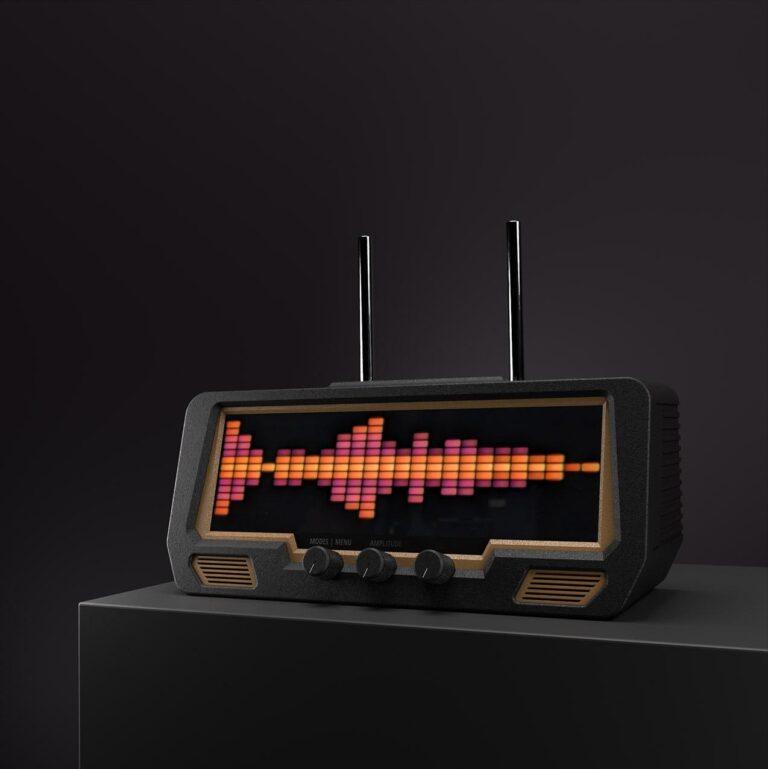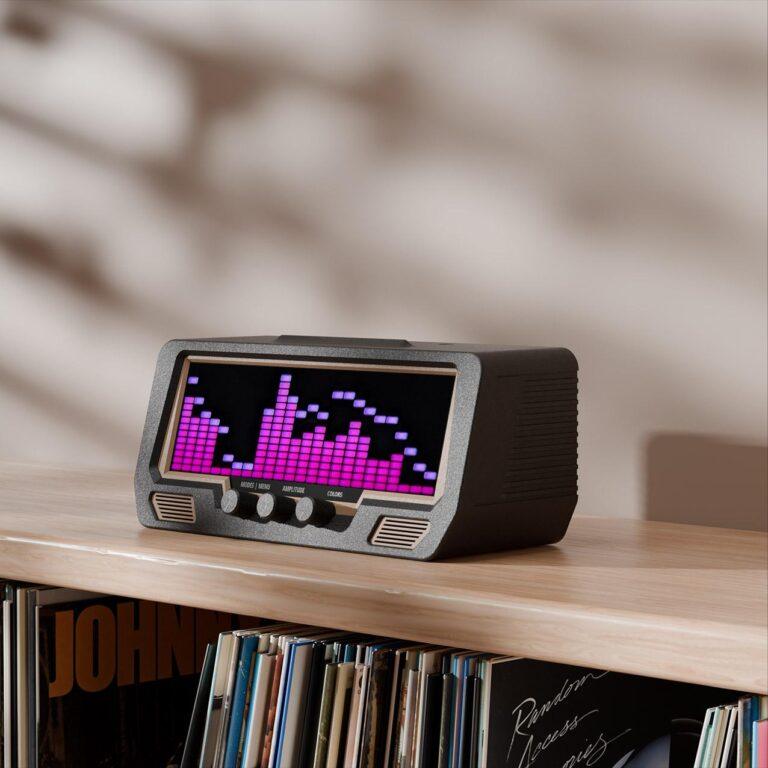Most people hear “music visualizer” and think about software: animated waveforms, bouncing circles, or colorful graphics attached to a YouTube video.
But a music visualizer doesn’t have to stay inside your screen. It can live in your room, on your desk, or next to your turntable.
That’s where physical LED audio visualizers come in. These are hardware devices that react in real time to your sound and transform it into light. Once you’ve seen your music pulse through LEDs on your wall, it’s hard to go back to software alone.
What Exactly Is a Music Visualizer?
A music visualizer is any system that turns sound into visuals.
There are two main types:
- Software visualizers: on-screen animations.
- Hardware visualizers: real LED lights that respond to audio.
Software is the version most people know, but hardware is what actually changes your environment instead of just your screen.
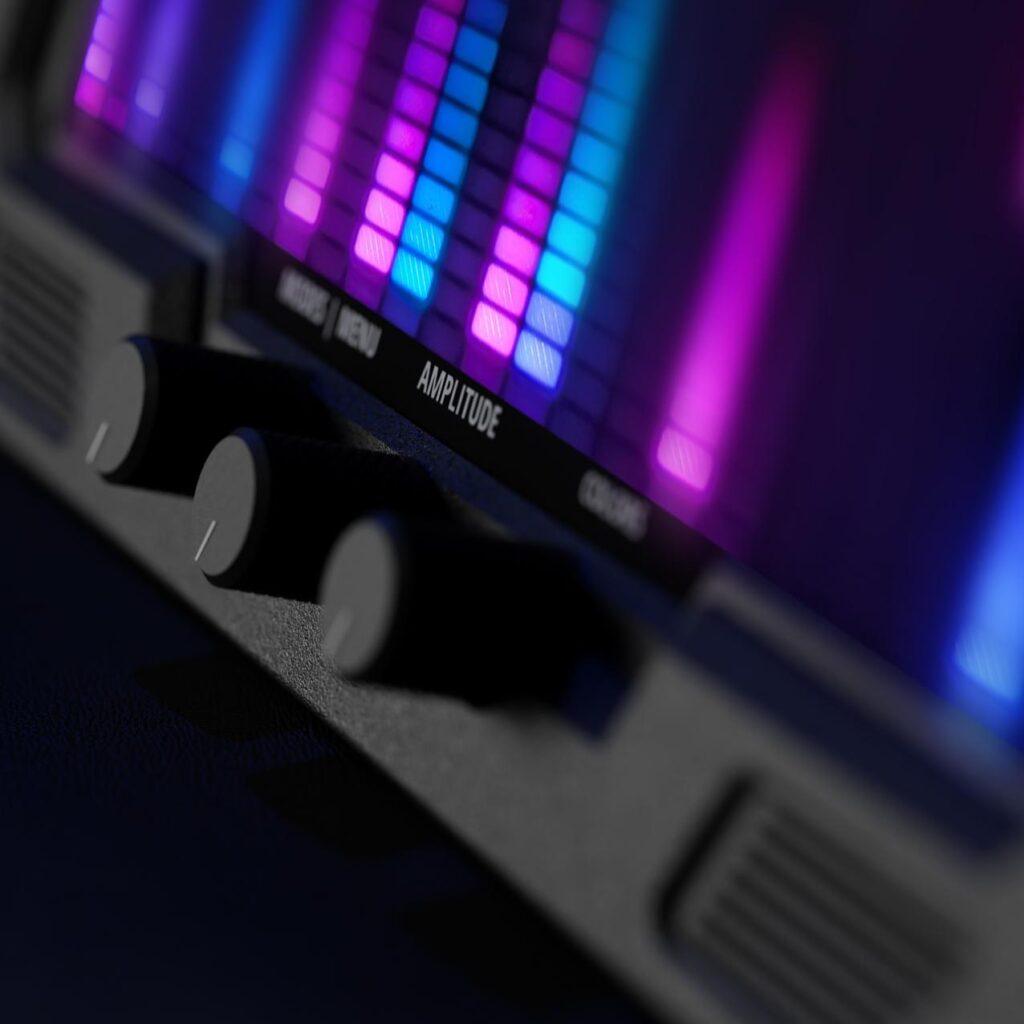
A Quick History of Music Visualizers
- 1970s–80s: Oscilloscopes and analog spectrum analyzers.
- 1990s: Winamp plugins, Windows Media Player animations, iTunes “light shows.”
- 2000s: YouTube “visualizer videos” for electronic and hip hop tracks.
- Now: Physical LED visualizers in home studios, DJ setups and living rooms.
The pattern is clear: people don’t just want to hear music. They want to see it.

Types of Music Visualizers
1. Software Visualizers (Apps and Video Generators)
- Usually free or low-cost.
- Create visual effects for recorded tracks.
- Perfect for uploading music to YouTube or TikTok.
- Examples: After Effects templates, Kapwing, VEED, Renderforest.
The catch? They only live on screen. Once you close the video, they’re gone.
2. Hardware or Physical Visualizers (LED Devices)
- Standalone devices with LEDs that react in real time.
- Connect through a microphone, aux input or USB power.
- Double as decor, mood lighting or a centerpiece.
- Example: the Audiorays Visualizer Pro, designed in Montreal.
The upside? It’s always on, always reacting, and always part of your space.
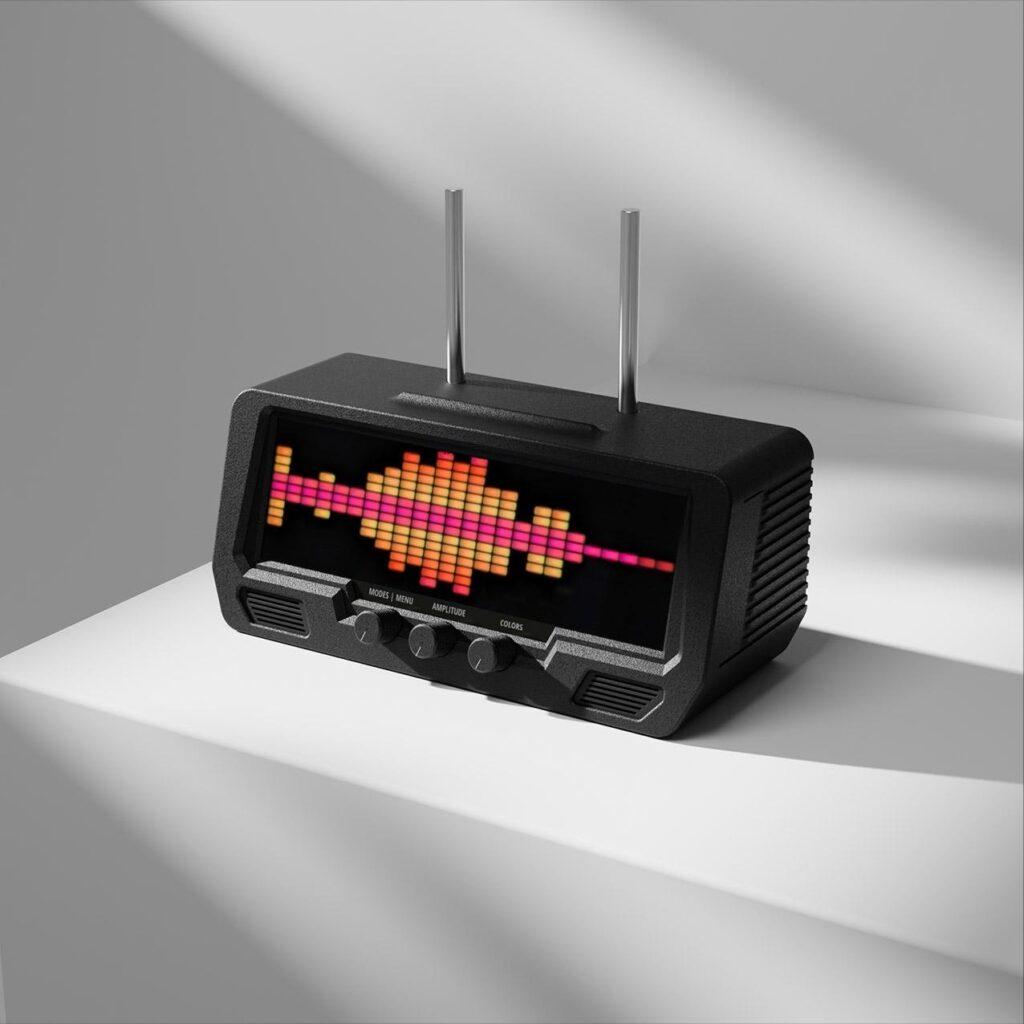
Why Physical LED Music Visualizers Are Different
Software is fine for videos. Hardware is alive in your environment.
- Instant response: No rendering, no uploads. Just plug in and watch.
- Part of your space: Your wall, desk or shelf becomes the visualizer.
- Enhances listening: Great music deserves more than a screen saver.
- Decor value: Looks good even when it’s off.
- Simple setup: Plug and play, no editing skills needed.
RGB strips give you static colors. A real music visualizer responds to your sound in real time.

How Physical Music Visualizers Work
Devices like the Audiorays Visualizer Pro use a process called Fast Fourier Transform (FFT).
Here’s how it works in plain English:
- The device listens to your music.
- It breaks the sound into frequency ranges: bass, mids and highs.
- Each range drives a set of LEDs.
- Bass hits make lights pulse, vocals ripple and highs sparkle.
You don’t need to understand the math. Just know it’s why your wall lights up when the kick drum drops.
Who Uses Physical Music Visualizers?
- Vinyl collectors: spinning records feels even more immersive.
- DJs: a portable light show adds impact.
- Audiophiles: music becomes a full sensory experience.
- Gamers and streamers: interactive backgrounds make streams stand out.
- Producers and creators: the right vibe boosts creativity.
- Anyone with RGB fatigue: because static rainbow strips get old fast.
Software vs Hardware: Side-by-Side
| Feature | Software Visualizer | Hardware Visualizer |
|---|---|---|
| Runs in real time | No | Yes |
| Physical presence | No | Yes |
| Setup difficulty | Medium (editing) | Plug and play |
| Decor value | None | Doubles as art |
| Great for YouTube | Yes | Yes for background display |
| Great for listening | Average | Excellent |
The Audiorays Difference
Not all hardware is created equal. Some cheap devices flicker, lag or break after a week.
The Audiorays Visualizer Pro was built to be the opposite of disposable tech:
- 392 LEDs packed into a crisp matrix for stunning detail.
- Dual input: reacts to both microphone and line-in.
- Custom palettes and scrolling text for personalization.
- Designed and built in Montreal.
This isn’t just another gadget. It’s meant to be the centerpiece of your setup.

Use Cases: Where a Music Visualizer Fits
- Living room: playlists, parties or movie nights.
- Home studio: energy while recording or mixing.
- DJ booth: compact, portable light show.
- Vinyl corner: elevate your record display.
- Gaming setup: reactive ambient lighting.
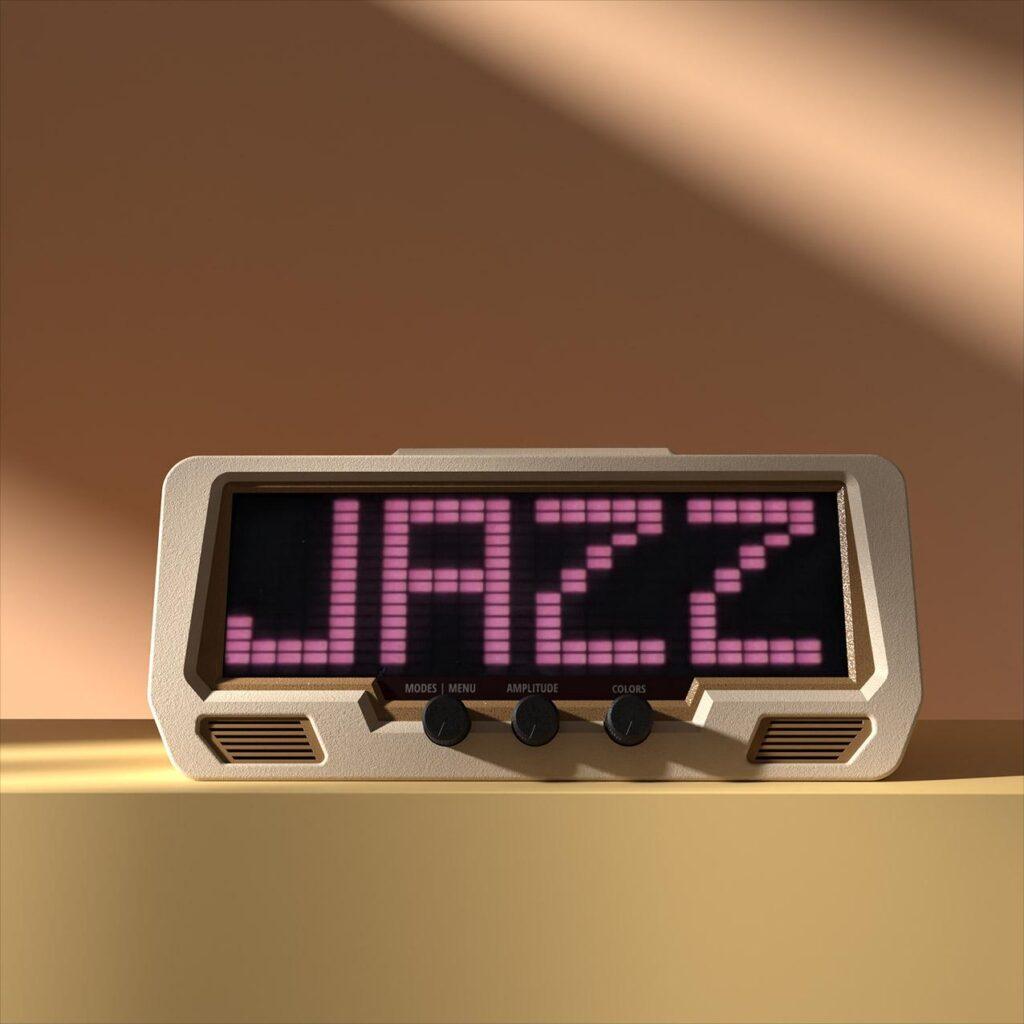
Gift Potential: Why People Buy Them
- Music lovers who already own every record.
- Tech fans who want more than RGB strips.
- DJs and producers who want a portable wow factor.
- Students in dorm rooms who want atmosphere without clutter.
That makes music visualizers one of the most unique gifts under $200 for audiophiles and creators.
The Future of Music Visualizers
Music visualization isn’t new, but hardware devices are only getting started. Expect to see:
- Larger wall-sized installations.
- Multi-device synced systems.
- Hybrid displays that combine spectrum visuals with album art.
The direction is clear. Visualizers are moving from software nostalgia to physical experiences.
Final Word: Your Music Deserves More
If you just want visuals for a video, software works fine. If you want your music to transform your environment, hardware is the way to go.
Physical LED music visualizers like the Audiorays Visualizer Pro don’t just show sound. They make you feel like you’re inside it.


